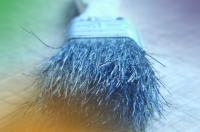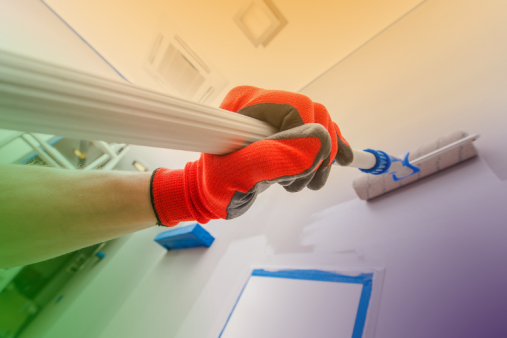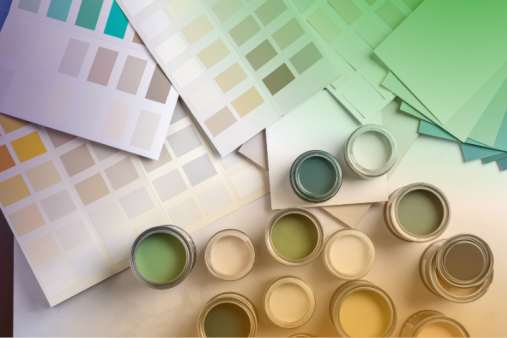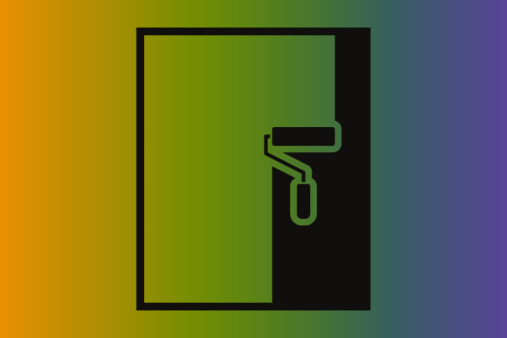How to Apply a Mist Coat (Step-by-Step Guide)
When you've freshly plastered a wall or ceiling, the next step before painting is applying a mist coat—a diluted emulsion paint that seals the porous surface. Skipping this crucial step can lead to peeling paint, uneven finishes, or poor adhesion.
Here’s a step-by-step guide to applying a mist coat properly, ensuring your final paint finish is smooth, durable, and professional-looking.
🧰 Tools & Materials You’ll Need
Tools:
-
Large paint roller and tray (medium or long pile for fresh plaster)
-
Paintbrush (for edges and corners)
-
Dust sheets or plastic sheeting
-
Masking tape (if needed)
-
Stirring stick or paint paddle
-
Clean bucket or container for mixing
Materials:
-
White matt emulsion paint (non-vinyl, breathable type is best)
-
Clean cold water
-
Optional: Sandpaper (fine grit) or sanding block
-
Optional: Protective gloves and safety goggles
🎯 Step-by-Step: How to Apply a Mist Coat
Step 1: Let the Plaster Dry Fully
-
Wait until the new plaster is completely dry. It should change from dark pink or brown to a uniform light pink/beige.
-
This usually takes 3 to 5 days, depending on humidity and ventilation.
Step 2: Protect the Area
-
Lay down dust sheets or plastic to protect floors and furniture.
-
Use masking tape to protect sockets, switches, and trims.
Step 3: Choose the Right Paint
-
Use a white matt emulsion that does NOT contain vinyl. Breathable paints are best as they let residual moisture escape.
-
Avoid silk or vinyl emulsions for mist coats—they can create a skin that traps moisture.
Step 4: Mix Your Mist Coat
-
The typical mist coat ratio is:
-
3 parts paint to 1 part water for most emulsion paints
-
Some use 70% paint, 30% water, depending on the brand and consistency
-
How to mix:
-
Pour the paint into a clean bucket.
-
Gradually add cold water while stirring.
-
Mix until smooth and lump-free. The mixture should be runnier than normal paint but not watery.
✅ Tip: Test on a small section of wall. It should soak in easily without beading or running down excessively.
Step 5: Apply the Mist Coat
-
Use a roller for large flat areas and a brush for edges or tight spaces.
-
Apply the mist coat evenly, working in sections.
-
It may appear patchy at first—that’s normal as the plaster absorbs it.
-
Don’t overload the roller; thin coats are better.
🕒 Drying time: Let the mist coat dry for at least 6–12 hours, ideally overnight.
Step 6: Inspect and Lightly Sand (Optional)
-
Once dry, inspect the surface.
-
If it feels rough, lightly sand with fine sandpaper to smooth imperfections.
-
Wipe the dust off with a dry cloth.
Step 7: Apply Top Coats
-
Now your wall is sealed, you can apply two full-strength coats of your chosen paint.
-
You can use coloured emulsion or continue with matt white for a minimalist finish.
❓ 10 Frequently Asked Questions About Mist Coats
1. What is a mist coat?
A mist coat is a thinned-down coat of emulsion paint used to prime freshly plastered walls or ceilings. It soaks into the porous plaster, sealing it and creating a surface that paint can adhere to properly.
2. What ratio should I use for a mist coat?
The most common mist coat ratio is 70% paint to 30% water, or about 3:1. However, always check the paint manufacturer’s instructions, as some require more or less water.
3. Can I use any paint for a mist coat?
No. Use non-vinyl, matt emulsion paint. Avoid silk, satin, or vinyl-based paints, as they don’t let the plaster breathe and may peel.
4. What colour should the mist coat be?
White is standard because it provides a neutral base for any top coat colour. Some people tint it slightly if they’re using a very dark top coat.
5. How long should I wait after plastering to apply a mist coat?
Wait until the plaster is completely dry, typically 3–5 days, depending on room temperature and ventilation. The surface should be a pale, even colour.
6. Do I need to sand after the mist coat?
Not always. Only sand if the surface feels rough or has visible ridges or roller lines. Use fine sandpaper and dust off before applying top coats.
7. What happens if I skip the mist coat?
Skipping the mist coat can cause the final paint to:
-
Peel or flake
-
Apply unevenly
-
Fail to adhere properly
This could mean having to re-paint or even re-plaster.
8. Can I apply more than one mist coat?
Usually, one is sufficient. If the plaster is still soaking up paint or looks patchy, you can apply a second mist coat.
9. Can I use a paint sprayer for the mist coat?
Yes, but only if the sprayer is suitable for emulsion paints and the mix is thinned appropriately. Always test the consistency first to avoid clogging the sprayer.
10. How long should I wait after the mist coat before applying the top coat?
Wait at least 6–12 hours after the mist coat has dried (ideally overnight). Make sure it’s fully absorbed and dry to the touch before applying the top coat.
✅ Final Thoughts
Applying a mist coat might seem like a small task, but it’s a critical step that ensures your paint job lasts and looks great. With the right mix, tools, and timing, you’ll give your freshly plastered wall the perfect foundation for a professional finish.






